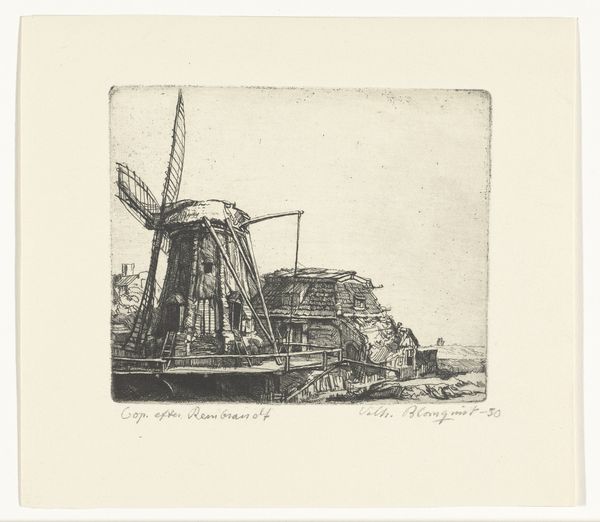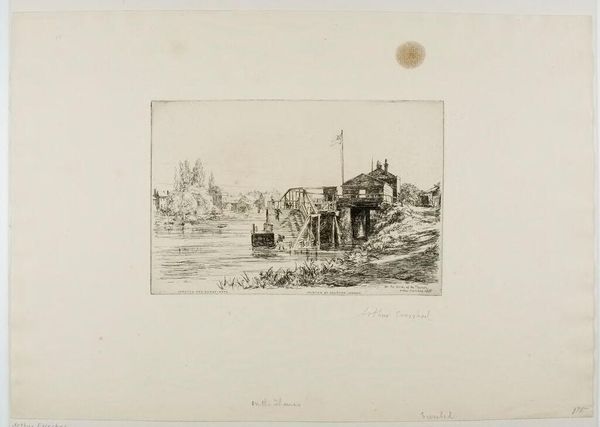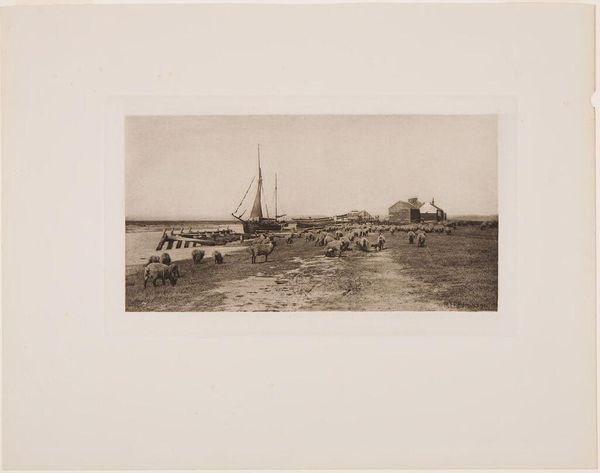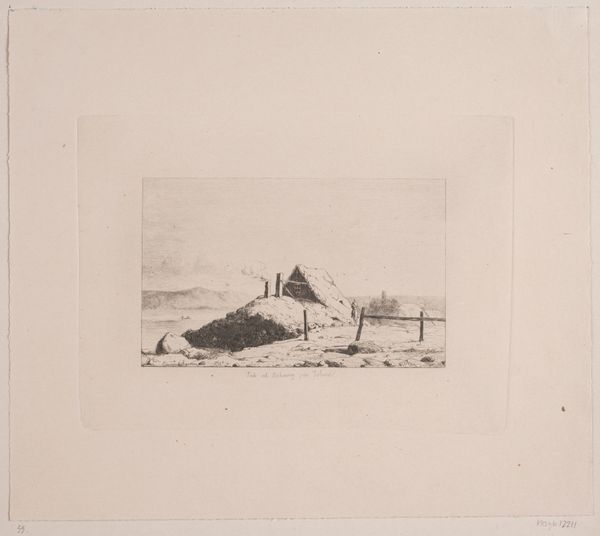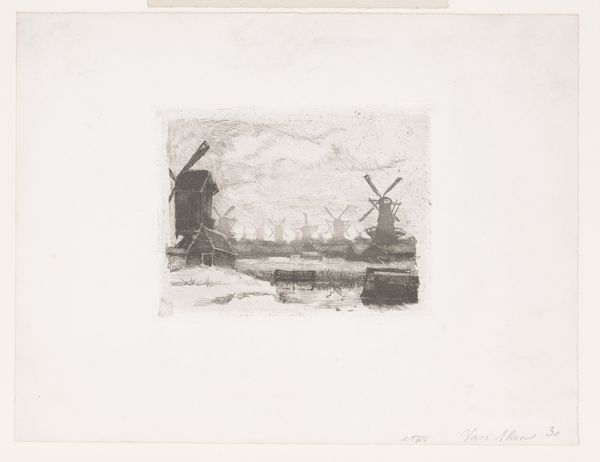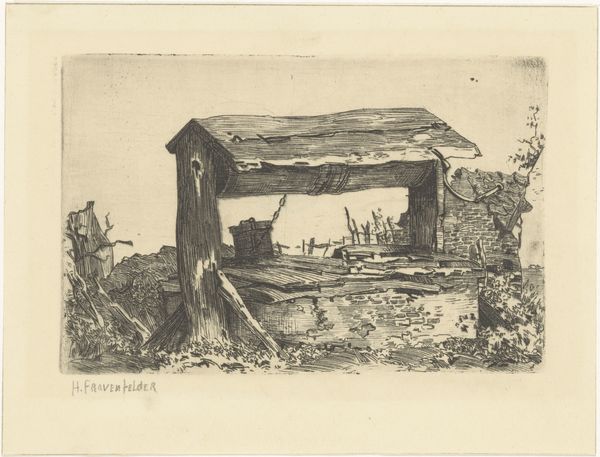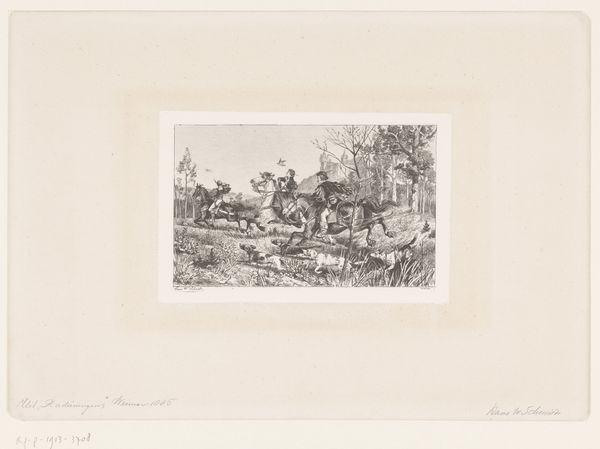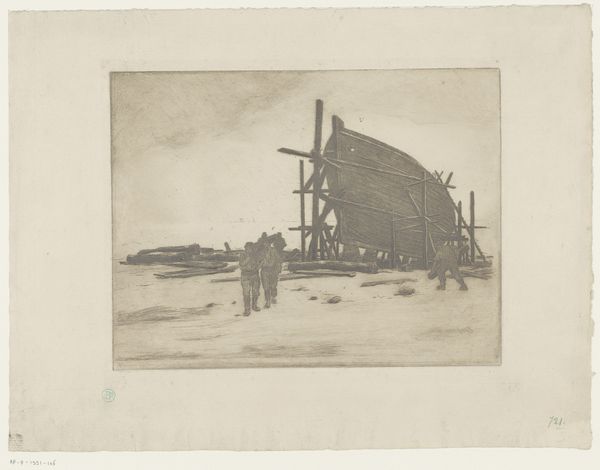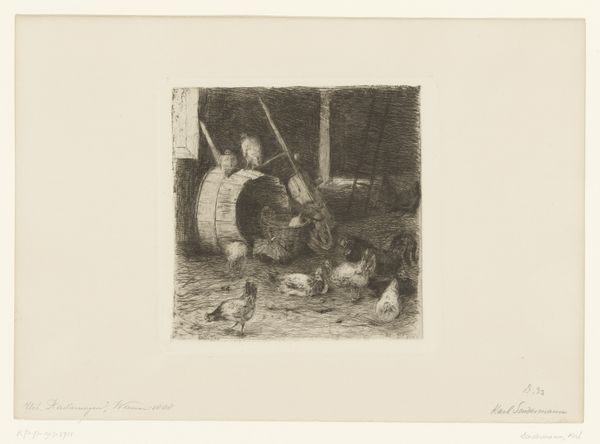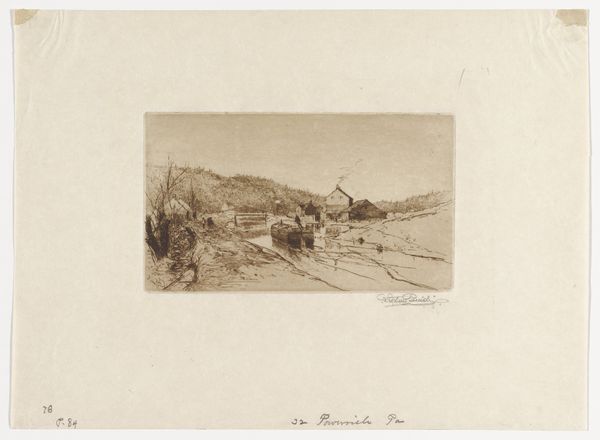
Copyright: CC0 1.0
Curator: This is "Windmill and Lock," a print by Thomas Goff Lupton, who was active in the early to mid-19th century. Editor: It feels so delicate, almost like a memory fading into the paper. I'm drawn to the contrast between the industrial windmill and the stillness of the water. Curator: Lupton was known for his mezzotints, a printmaking technique that allows for subtle gradations of tone. You can see how he uses it here to create a sense of depth and atmosphere. The windmill suggests progress, industry and landscape, while the lock represents control and perhaps even restraint over nature. Editor: Absolutely. And the way the light catches the lock’s wooden structure emphasizes labor, doesn’t it? There’s such a focus on the built environment influencing the natural one. It feels both romantic and strangely… melancholy. Curator: It's an interesting observation. Maybe it speaks to the changing landscape of the time, the rise of industrialization and its impact on rural life. Editor: Looking at it now, I feel a gentle sense of both beauty and human imposition. Curator: A fitting end to our reflection, I think.
Comments
No comments
Be the first to comment and join the conversation on the ultimate creative platform.

